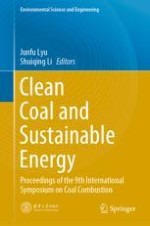2022 | OriginalPaper | Buchkapitel
61. The Mechanisms and Applications of NOx Reduction by Low-NOx Burner Coupling Deep Air-Staging Technology in Pulverized Coal
verfasst von : Xiaolei Cheng, Naiji Wang, Xin Zhang, Yongying Wang, Long Chen
Erschienen in: Clean Coal and Sustainable Energy
Verlag: Springer Singapore
Aktivieren Sie unsere intelligente Suche, um passende Fachinhalte oder Patente zu finden.
Wählen Sie Textabschnitte aus um mit Künstlicher Intelligenz passenden Patente zu finden. powered by
Markieren Sie Textabschnitte, um KI-gestützt weitere passende Inhalte zu finden. powered by
